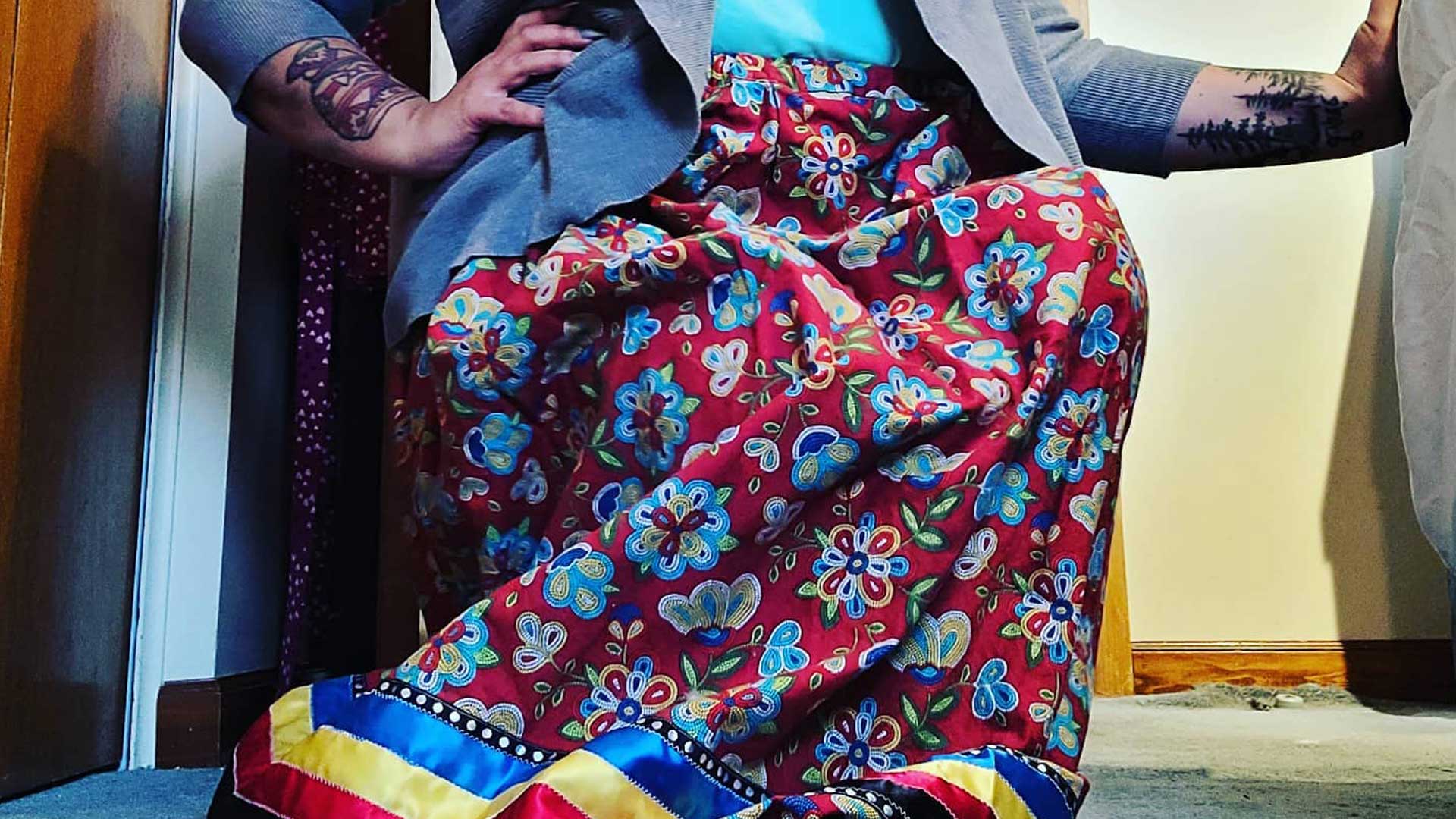
Lana, Bella and Chris Kulak of Kamsack, Sask. Submitted photo
Supporters want a young First Nations girl in Saskatchewan to keep wearing her ribbon skirt and do it with pride.
“Women today say it’s like armour – it’s protection,” said Eunice Ketchemonia-Cote, a great-grandmother on the Keeseekoose Reserve north of Kamsack.
“I like wearing my ribbon skirt. I like the way the ribbons flow.”
Ketchemonia-Cote asked First Nations women to post photos of themselves in their long, colourful skirts on Facebook to support 10-year-old Bella Kulak.
She was floored by the response.
“There was an extreme amount,” she said in an interview. “I wanted awareness.
“I didn’t want it to turn into ugly hate for the (educational assistant). She’s a person. Maybe she made mistakes with what she said. I’m sure she regrets it.”

Bella was shamed last week by an educational assistant in her Grade 5 class after she wore a ribbon skirt to the school’s Formal Day.
She was told her outfit didn’t match and wasn’t formal.
“The one that made (Bella’s) skirt is my husband’s daughter,” added Ketchemonia-Cote.
“So this was a put-down to this little girl…the family is very proud of their heritage. The father is white but they’re strong in their heritage. They want their children to know their roots, which is First Nation.”
The aide, classroom teacher and school division have all apologized for the controversy.
No one from Good Spirit School Division in Kamsack returned a call from APTN News seeking comment, but Bella’s father said his family has been invited to help improve the education system’s knowledge of First Nations issues, including clothing.
Bella’s maternal grandmother, Stella Pelly, said she has made presentations to division officials and students in the past.

She confirmed a rally is planned for the first day back to school after the Christmas break with a drum group and women wearing ribbon skirts.
“It’s going to open a lot of eyes. I’m glad my granddaughter has a lot of support,” Pelly said, noting meetings are also planned with school officials to discuss how to respect First Nations culture.
Ribbon skirts are historical and traditional clothing that honour First Nations heritage and help represent causes like missing and murdered Indigenous women and girls.
They’re considered an expression of history, resilience and character, but aren’t necessarily only for ceremonies like powwows, events and funerals.
“I have an every day ribbon skirt,” said Ketchemonia-Cote. “I wear it when I go to town, I wear it into the post office, I wear it into the hospital.
“I want people to see me wearing my ribbon skirt. I’m proud of my ribbon skirt.”
Said to have its roots in the 18th century, the symbol of womanhood tells a story of adaptation and survival – showing that tribal communities have adopted western culture and made it their own.

Several museums report the materials used to make ribbon skirts aren’t Indigenous in origin, “but the method of applique done to create the folded looked of the ribbon has become a visual marker of identity for centuries.”
Hearing a 10-year-old was belittled for wearing one bothered people around the world.
Ketchemonia-Cote said a former RCMP officer living in Germany sent Bella $100 as a Christmas gift after seeing Facebook posts about what happened.
Other women said they wanted to send Bella more ribbon skirts to wear – feeling it was a powerful political and spiritual symbol that shouldn’t be tarnished.
“I have grandchildren and I make ribbon skirts,” noted Ketchemonia-Cote.
“The ribbon skirt age is sort of coming renewed. There’s a resurgence of ribbon skirts. We’re starting to wear ribbon skirts and feel good about it.”
The “young lady who was shunned for wearing a ribbon skirt to a school function” is a warrior in the ongoing battle for respect and recognition, added Helene Cote of Kamsack, who posted a photo of herself in a brightly decorated ribbon skirt.
“As an educator I know the importance of accepting students for who they are,” she said on Facebook.
“Empowering students and building confidence is what molds successful students.”
Ketchemonia-Cote said she spoke several times with the deputy superintendent of the division to share her opinion and hear the official’s point of view.
“We had a very lengthy discussion and she was embarrassed. And she wanted to do something good about it.”
Ketchemonia-Cote said she felt reassured the division would use the skirt fiasco to sow peace and acceptance.
“What happened shouldn’t have happened. But let’s see something good come of it.”










